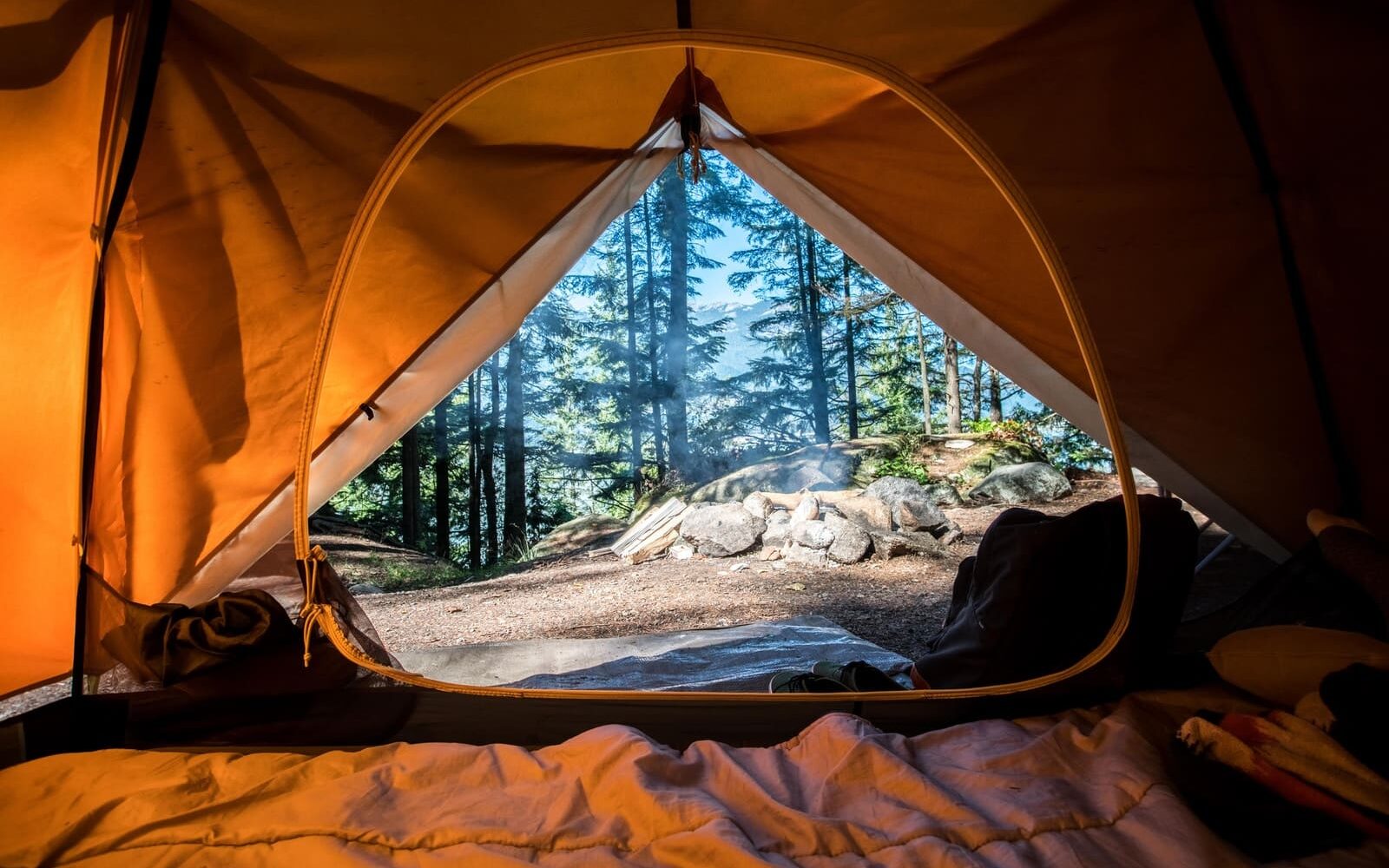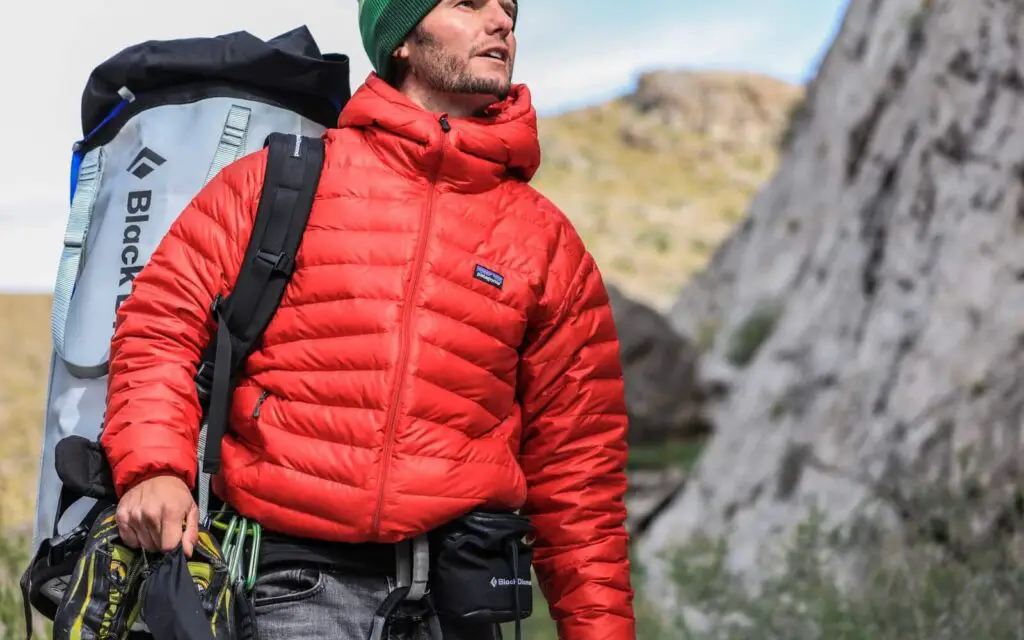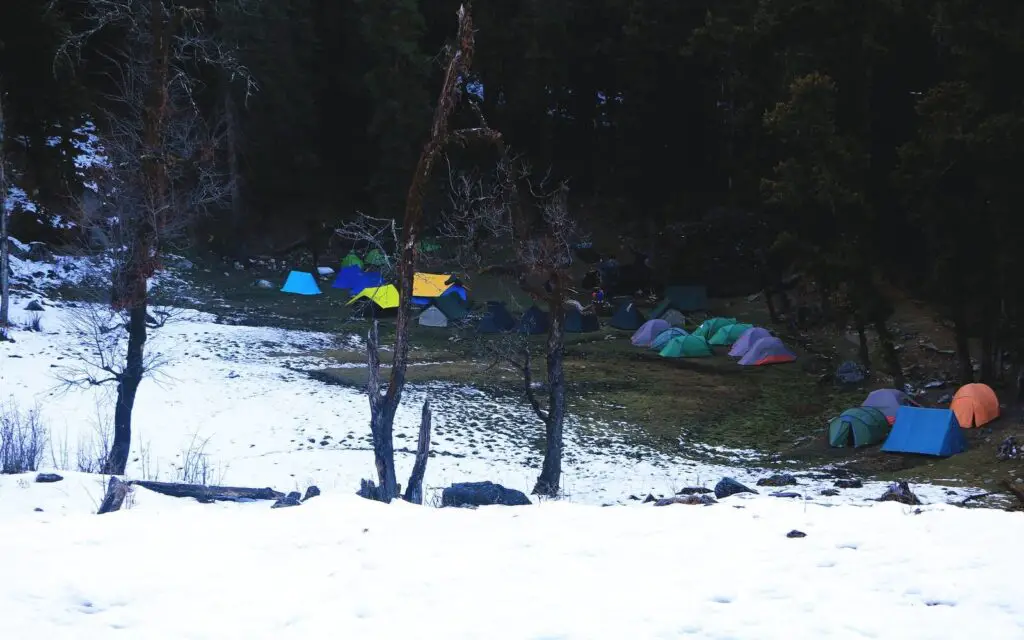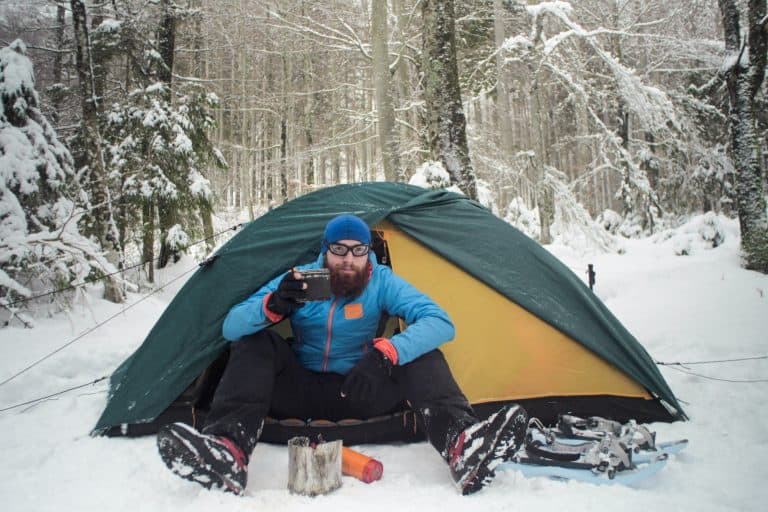When it comes to camping in the winter, whether it’s motorcycle camping, multi-day hiking style camping or just car camping, there are a few small ways that you can prepare yourself that will make a huge difference to the enjoyment of your trip. Ultimately the goal here is to stay warm and dry, whilst still enjoying the outdoors.
The first thing you need to carry while winter camping is a sleeping bag. A winter camping trip is only exciting when you have the proper winter camping gear. A warm sleeping bag to maintain body temperature is essential, especially on frozen ground. Winter conditions can get extreme and the outside can be frozen solid. The melt snow adds to cold weather and loose snow is equally cold. One of the most common winter camping tips for riders is to wear a down jacket all the time. Sleeping pads protect you from high winds. Normal hiking boots are suitable for such camps. It is essential to choose a proper tent site and keep a distance from heavy snow loads. Warm socks help to keep the feet warm and retain body heat. Staying warm is imperative and hot drinks can also help you.
Heavy winter clothing which is a great motorcycle protective gear will benefit riders on such camps. Most liquid fuel stoves are portable and can help to melt snow. To tent overnight, you need the right gear to protect yourself from cold temps and melting snow. Snow melts are cold but it is still essential to stay hydrated. Water freezes and heat loss is unavoidable. Two full length pads, drinking water, frozen boots, water resistant clothes, electronics warm regulators should always be by your side. Clothes with built in pressure regulator, the right sleeping bag, calorie dense foods, freeze shut backup stove, insulating layer of clean clothes help to radiate heat.
Here are my 5 must-haves & dos when camping in winter:
1. Invest in the right tent

When it comes to tents there are $20 tents and there are $1000 tents and yes, there is a considerable difference! When it comes to buying a tent I like to think of it as an investment, this is going to be your shelter for every camping trip to come. So it would make sense to make sure that you’re buying the right one!
When it comes to tents there are really 2 options:
- 3 Season: Designed for Summer, Spring & Autumn
- 4 Season: Designed for Summer, Spring and Autumn & Winter
Now I know what you’re thinking. “I’ve just looked at 4 season tent option on amazon and they are freaking expensive!”. Yes, they are, with the average four season tent costing $800-$1000 they are definitely expensive. But there is good news, 3 season tents are still completely fine to use in winter down to 32 F or 0 C. Where a 4 season tent really shines is when you’re pushing below 32 F with blizzard-like winds.
2. Always bring a Sleeping pad
When it comes to winter camping having a high-quality sleeping pad cannot be overlooked. Even more so than choosing the right tent!
Let me explain why.
When camping in winter you’re lying down on the hard, cold ground and it takes your body a certain amount of time and energy to warm the floor beneath you.
Without a sleeping bag, your body will need to work all night to try to keep the floor beneath you warm. However, with an appropriate cold weather sleeping bag, pockets of air are warmed up and trapped in a specific way that minimizes the amount of effort your body would constantly be needing to use. A sleeping bag at night keeps you protected from the coldest temperature. Exposed skin to deep snow can have a negative impact.
When it comes to how well a closed cell foam pad will insulate you in cold temperatures, cold weather insulation bags are measured with an R-value. This R-value measures its capacity to resist heat flow through it. So when you’re looking for winter camping hacks the higher this value, the better it will insulate you from cold surfaces. For example, a really thin sleep pad would show the value as 2 (and a really thick and well-insulated sleep pad would have a value of 5.5.
3. Choose a down sleeping bags and avoid synthetic
There are some key reasons that your winter camping essentials should be down and not synthetic:
- Size and compressibility: When you’re out on the road size is often the determining factor as to whether or not you bring an item on a trip. Down has the unique ability to compress into a quarter of its size, using a stuff-sack is the best way of doing so.
- Weight: When it comes to down vs synthetic, down is much lighter than synthetic and has a higher warmth to weight ratio.
- Longevity and durability: When looked after properly a high-quality down sleeping bad will last you decades of use. Whilst my experience has found synthetic sleeping bags don’t tend to last more than 5 or so years,
4. Layer up with the right winter gear

When you are out in the cold laying up properly makes a huge difference to how well you deal with the elements. When layering up it is important to understand the functions of each individual layer and what they are trying to do:
- Base layer: wicks sweat off your skin & keeps a thin layer of air against your skin
- Middle layer: Insulates your current body warmth and retains body heat to protect you from the cold
- Outer layer/Shell: Blocks wind, rain & snow to shields you from external elements.
5. Choose your campsite wisely

Choosing the right place to set up camp is critical to having a good night sleep. The general advice here is to:
- avoid the bottom of hills, top of hills or areas where cold-air troughs form.
- Pick a nice flate place to setup your tent.
- If you’re camping on snow walk around and use your shoes to compress the snow down. packed snow will work better underneath your sleeping bag liner to insulate you from the ground.
- Pitch your tent wth the door facing away from the wind.






